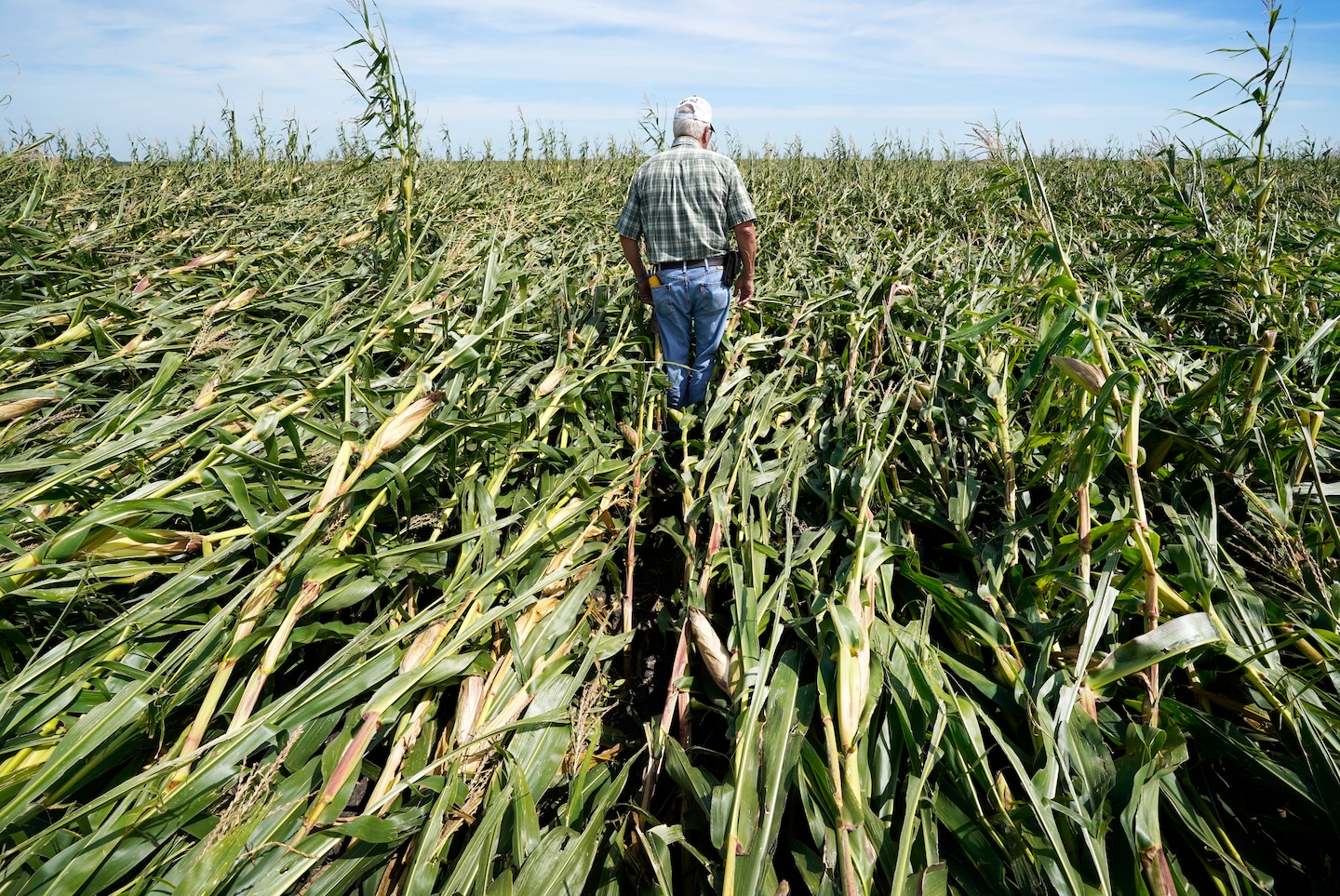Climate change is killing the farm belt. With a little help, farmers help fix it.

The derecho followed a parched July. “It was like a blast furnace for two weeks,” Gannon said. “Then it didn’t rain from the derecho [until] Labor Day.”
This is our new normal. Climate change — both in Iowa and elsewhere — is making it harder for farmers to turn a profit. It could affect our ability to feed ourselves for generations. Gannon waits for his harvesting equipment to be repaired under skies casting a weird, pinkish-orange hue from West Coast wildfire smoke.
Gannon’s corn is bent and parched. He won’t know how badly he is hurt until after the harvest. Some neighbors had it worse. He hopes the farm will break even this year, thanks to crop insurance and government disaster assistance.
Last April, they updated their findings: This drought, the worst in a millennium, has begun.
Already, it has become more difficult growing corn even with irrigation in eastern Kansas. The nights are just getting too hot. Eugene S. Takle, a prominent climate modeler at Iowa State University, reports that corn yields likely will get chopped by 30 percent in a couple of decades if we go on belching out carbon dioxide and nitrogen. That means higher food prices. He warns that by 2050, the number of days of 100-plus degrees in Iowa will reach 67 — triple what it was in the 1960s. Corn cannot survive that kind of heat.
Agriculture is a major generator of greenhouse gases — methane, nitrogen and carbon dioxide — that cause extreme weather. But farms can be the solution to climate change. The markets have been telling farmers for years that they are planting at least 30 percent too much corn — that’s why so many are going broke.
Rural fortunes can be salvaged, along with the planet, if we pay farmers to sequester carbon by planting grass instead of corn, put their livestock back on pasture and out of unsustainable feedlots, and rotate crops with minimal tillage. Regenerative agriculture, as it is called, using old-fashioned crop-livestock rotations, can eliminate agriculture’s greenhouse-gas footprint and actually start drawing down carbon and planting it in the soil.
The mechanism is in place. The Conservation Stewardship Program in the existing farm law pays for precisely these sorts of practices on working lands. (Farmers such as Gannon don’t necessarily have the cash to invest in carbon-sequestering practices when they are trying to dig out the machine shed.) The CSP would pay farmers to save soil and water, and, in the process, grow less corn. But Congress cut it in half during the last farm bill negotiations. Conservation programs have been under attack since the Dust Bowl because they don’t directly serve the interests of the petrochemical and meat lobbies that run the sector.
Joe Biden gets it. He proposes to triple the size of the stewardship program and fund conservation programs that are a principal mechanism for drawing down carbon. Farmers will take that deal if it means they can make a dollar more per acre by planting a cover crop instead of corn. President Trump says climate change is a hoax.
There is no time to waste. We can solve our climate crisis. We have the tools. Basic items such as wind turbines in Wyoming, solar panels in South Dakota and winter rye in Iowa can make a difference. Rural people already agree on it — and even some big food processors do too.
It just takes political will. Maybe the wildfires and derechos will muster it.
Read more:






